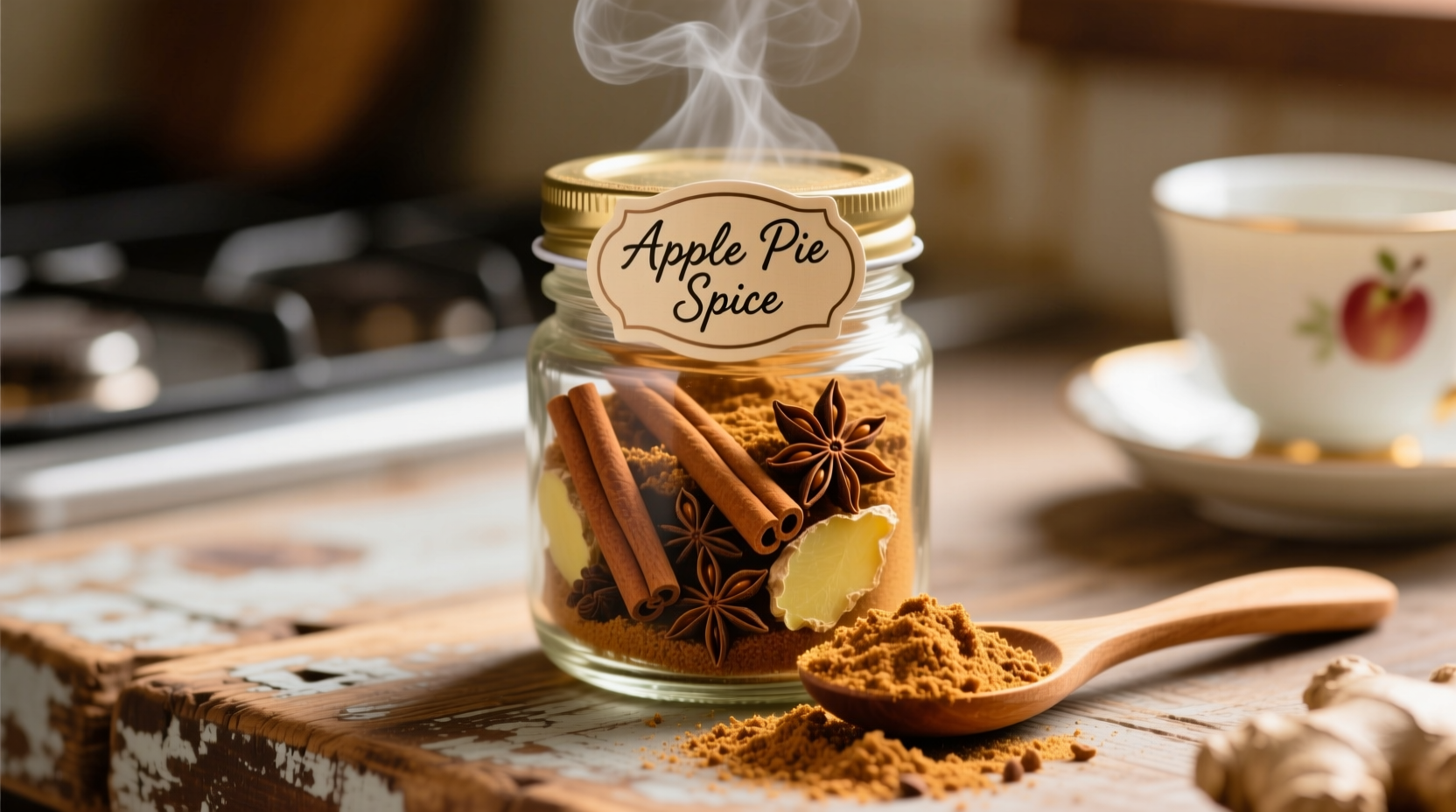Ever stared at a recipe calling for apple pie spice and wondered what's actually in that little bottle? You're not alone. This essential baking blend transforms ordinary apples into extraordinary desserts, but understanding its composition unlocks better baking results. Let's explore exactly what makes up this versatile spice mix and how to use it effectively in your kitchen.
Core Ingredients of Apple Pie Spice
Unlike pumpkin spice which has become a cultural phenomenon, apple pie spice maintains a more consistent formulation across brands. According to the USDA's spice guidelines, authentic apple pie spice must contain specific proportions of warming spices that complement apple's natural sweetness and tartness.
The fundamental components include:
- Cinnamon (60-75%) - Provides the dominant warm, sweet base note
- Nutmeg (10-15%) - Adds subtle nuttiness and depth
- Allspice (8-12%) - Contributes clove-like, peppery warmth
- Ginger (5-10%) - Offers bright, zesty contrast
Some premium blends incorporate additional elements:
- Cardamom (2-5%) - For floral complexity
- Cloves (1-3%) - For intense warmth in small amounts
- Mace (2-4%) - A more delicate alternative to nutmeg
Why These Specific Spices Work with Apples
Food science research from America's Test Kitchen reveals that apple pie spice works because these particular spices share chemical compounds with apples themselves. The terpenes in cinnamon and the eugenol in allspice naturally complement the esters found in apples, creating flavor harmony rather than competition.
"The magic happens when the warming spices enhance apple's natural compounds without masking them," explains Antonio Rodriguez, culinary spice expert. "Unlike pumpkin spice which needs multiple components to build flavor from scratch, apple pie spice simply elevates what's already there."

Homemade vs. Store-Bought: Key Differences
| Characteristic | Homemade Blend | Commercial Blend |
|---|---|---|
| Flavor Intensity | Fresher, brighter notes | Muted due to shelf time |
| Ingredient Quality | Whole spices you control | Often lower-grade spices |
| Customization | Adjust to taste preferences | Fixed formula |
| Shelf Life | 3-6 months maximum freshness | 12-18 months (stabilizers) |
Creating Your Perfect Homemade Blend
When making your own apple pie spice, the quality of individual spices matters more than the exact ratios. Start with this professional chef's baseline formula:
Basic Apple Pie Spice Recipe
• 3 tablespoons ground cinnamon
• 1 tablespoon ground nutmeg
• 2 teaspoons ground allspice
• 1½ teaspoons ground ginger
• ½ teaspoon ground cardamom (optional)
• ¼ teaspoon ground cloves (optional)
Mix thoroughly in a small bowl, then store in an airtight container away from light and heat. For maximum flavor, toast whole spices before grinding - this simple technique Cook's Country found increases volatile oil content by up to 30%.
When to Use Apple Pie Spice vs. Individual Spices
Understanding context boundaries prevents recipe disasters. Apple pie spice works best in:
- Fruit-based desserts where apple is the star ingredient
- Recipes specifically developed for this blend
- Situations requiring consistent spice balance
Avoid substituting it when:
- Creating savory applications (use individual spices instead)
- Working with delicate fruits like pears or peaches
- Recipes specify exact individual spice amounts
Storage Recommendations for Maximum Freshness
According to food science research from USDA's National Institute of Food and Agriculture, ground spices lose 50% of their volatile compounds within six months under typical kitchen conditions. For optimal apple pie spice freshness:
- Store in opaque, airtight containers (not the original clear jars)
- Keep away from heat sources (not above the stove!)
- Label with creation date and use within 3-4 months
- Freeze in small portions for long-term storage (up to 1 year)
Common Substitutions When You're Out
Ran out of apple pie spice mid-recipe? These substitutions maintain flavor balance:
- For 1 tablespoon apple pie spice: 2 tsp cinnamon + ½ tsp nutmeg + ¼ tsp allspice
- For pumpkin pie spice substitution: Use 25% less (it's stronger)
- For individual apple dishes: 1 tsp cinnamon + pinch of nutmeg per apple
Remember that pre-mixed spices contain carefully calibrated ratios - substituting individual spices works best when you understand their relative strengths.
Evolution of Apple Pie Spice Through Time
This American staple has an interesting history that explains its composition:
- 1800s: Early American cooks combined available spices in varying proportions
- 1930s: Commercial spice companies standardized the blend for consistency
- 1950s: Addition of ginger became common for brighter flavor profile
- 2000s: Premium blends began including cardamom for complexity
- Present: Artisanal versions feature single-origin spices and custom ratios
The standardization process, documented in Cornell University's food history archives, explains why modern blends maintain such consistent formulations compared to more variable regional spice mixes.











 浙公网安备
33010002000092号
浙公网安备
33010002000092号 浙B2-20120091-4
浙B2-20120091-4